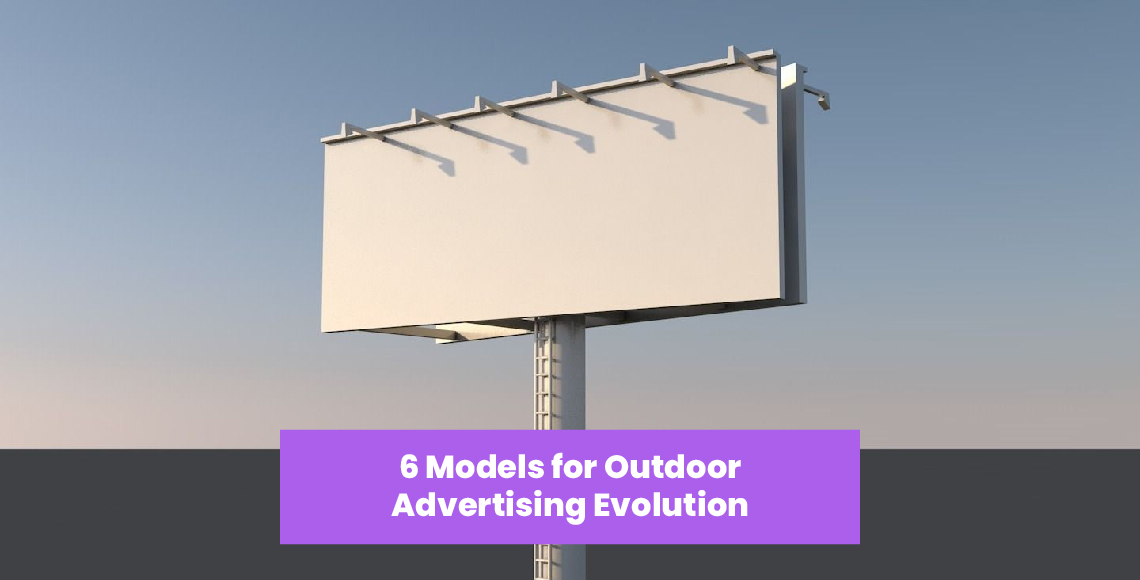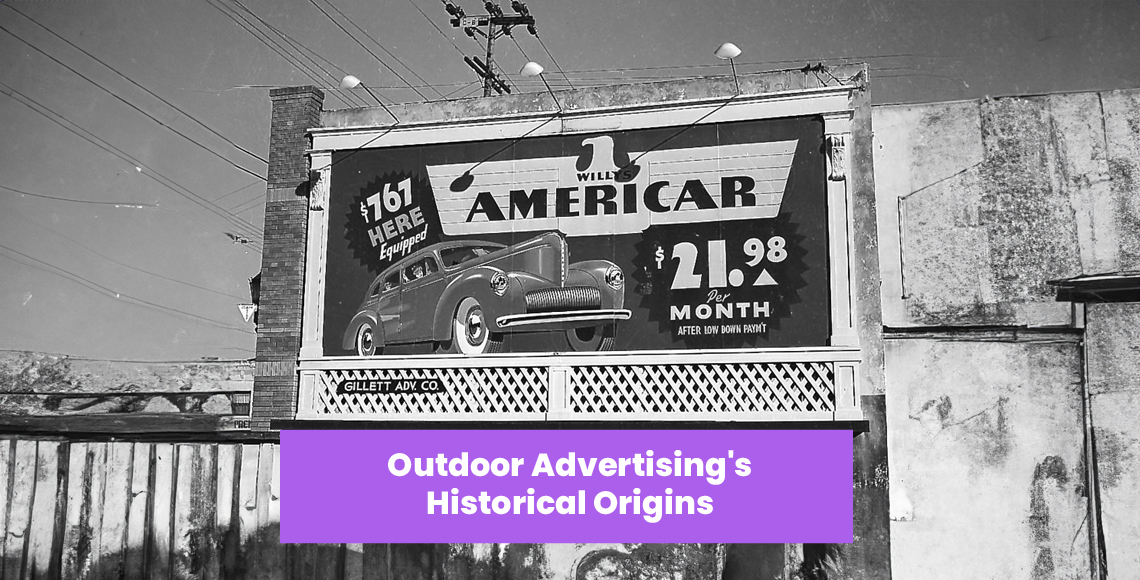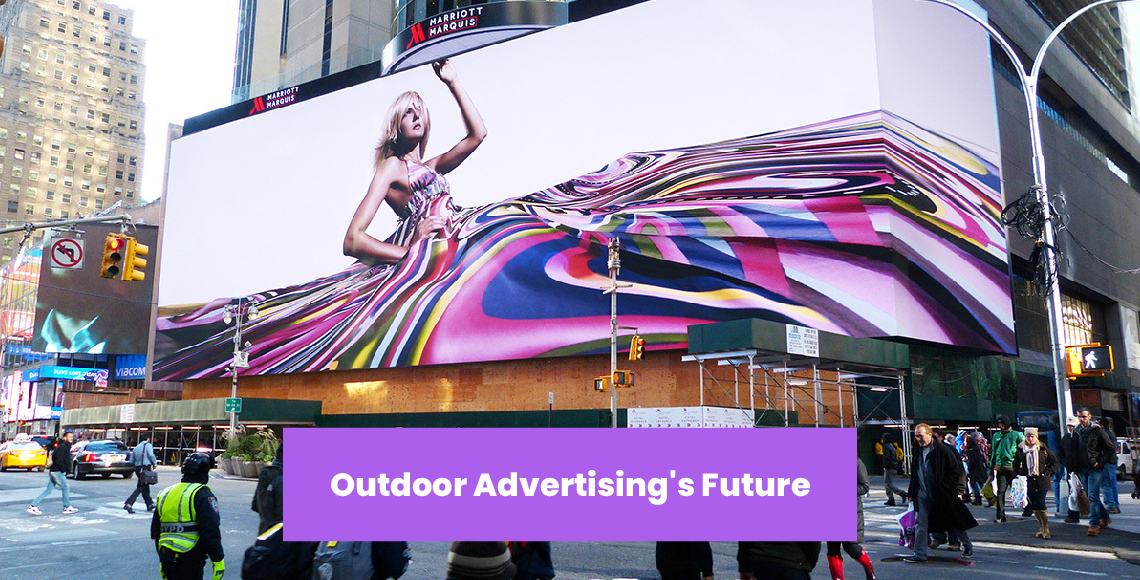
6 Models for Outdoor Advertising Evolution
Outdoor advertising is a dynamic and ever-changing marketing technique, and over decades it has played a critical role in connecting businesses with their target customers.
Outdoor advertising has evolved to accommodate the evolving demands of consumers and marketers alike, from classic billboards bordering highways to interactive digital displays in crowded city centers.
The following article will take you on a fascinating tour through the history of outdoor advertising, its current developments, and its lasting importance in the digital era.
Outdoor Advertising’s Historical Origins

Outdoor advertising has its roots in ancient civilizations, when merchants carved signs on stone tablets or painted them on walls to sell their goods and services.
These early kinds of outdoor advertising established the groundwork for what we see today.
Fast forward to the late 19th century, when the industrial revolution gave rise to the first billboards, which transformed cityscapes and roadside aesthetics.
The Evolution to the 20th Century
The 20th century saw a boom of inventiveness and diversity in outdoor advertising.
Transit advertisements on buses and trains joined traditional billboards and posters in catching the attention of commuters on the move.
Neon signs added a brilliant light to metropolitan environments, making nighttime advertising almost as effective as daytime displays.
Large electronic displays began to develop as technology evolved, allowing marketers to exhibit dynamic information.
– Digital Evolution
The digital era has once again changed outdoor advertising. LED screens, video walls, and interactive displays grabbed center stage, engaging audiences in ways they had never been before.
New York City’s Times Square became a global emblem for digital billboards, demonstrating the limitless potential of integrating technology with advertising.
Advertisers may now customize their messages in real-time, providing a feeling of urgency and relevancy.
– Customization & Targeting
Outdoor advertising has grown more targeted and individualized in the modern day, owing to data-driven insights.
Advertisers may modify messages based on the position of the display and the demographics of the audience passing by thanks to GPS technology and geofencing.
This degree of accuracy guarantees that the appropriate message reaches the right individuals at the right moment, enhancing the effectiveness of each advertisement.
– Creativity & Sustainability
As environmental concerns grow, the outdoor advertising sector has responded with environmentally friendly strategies.
Green billboards that use renewable energy sources like solar panels demonstrate a dedication to both creativity and sustainability.
Advertisers are also looking at new materials and designs that have a low environmental impact while making a large impression.
Outdoor Advertising’s Future

The future of outdoor advertising is a compelling blend of technology, creativity, and consumer-centricity.
Hyper-personalization, augmented reality, interactive displays, and environmentally friendly practices will change the advertising world as we know it.
As the lines between the real and digital worlds blur, outdoor advertisements will evolve from eye-catching imagery to engaging interactions that create long-lasting memories.
Brands that adopt these creative strategies will be at the pioneering of a new age in marketing, where creativity has no limitations.
1- Data Insights for Hyper-Personalization
Hyper-personalization will determine the future of outdoor advertising.
Advertisers will obtain better insights into customer habits, tastes, and demographics by using the power of data analytics.
Consider billboards that vary their content depending on the passerby’s age, gender, or even mood.
Outdoor commercials will become more contextually relevant and powerful as real-time data integration improves the link between businesses and viewers.
2- Integration of AR & VR
By applying immersive experiences to outdoor advertising, augmented reality (AR) and virtual reality (VR) technologies are set to change the industry.
Consider walking along a crowded street and seeing billboards come to life with interactive components via a smartphone app.
Companies can transport customers into virtual worlds where they may interact on a whole new level with products, services, and brand stories. The potential to combine the physical and digital worlds will change the way marketers engage their audiences.
3- Interactive Displays
Static displays will be replaced by dynamic, ever-changing ads that capture people’s attention and imagination.
Billboards and displays will transform into canvases for narrative, with animations, movies, and real-time content updates, thanks to improvements in display technology.
Passers-by will be able to browse merchandise, get information, and even make purchases via interactive touch displays at bus stops or railway stations.
4- Geolocation & Geofencing Accuracy
The accuracy of geolocation and geofencing will continue to play an important role in outdoor advertising in the future. Advertisers will use these technologies to target particular audiences in specific regions.
Consider strolling past a coffee shop and receiving a real-time offer for your favorite drink, luring you inside.
Customer engagement and conversion rates will improve as a result of the combination of location-based targeting and attractive content.
5- Eco-Friendly Designs
Outdoor advertising will change toward more sustainable approaches in an era of increased environmental concern. Solar-powered billboards, recyclable materials, and energy-saving displays will become commonplace.
Marketers will express not just their brand messaging, but also their dedication to environmentally sustainable activities, which will resonate with environmentally sensitive customers.
6- Smart Cities Integration
Smart cities and the Internet of Things (IoT) will be inextricably linked with outdoor advertising.
Billboards outfitted with IoT sensors may collect real-time data on foot traffic, weather conditions, and other variables. This data may be used to inform ad content, making it more relevant and timely.
Smart city infrastructure will enable seamless communication between outdoor advertisements and other digital platforms, resulting in a comprehensive marketing experience.
Conclusion
Outdoor advertising has evolved dramatically from its humble roots to its highly advanced current. The outdoor advertising sector has proven its durability and adaptability as customer habits and tastes continue to alter.
Outdoor advertising has remained a potent tool for businesses to deliver their ideas and interact with people on a larger-than-life-size, from billboards to digital displays.
The development of outdoor advertising is far from done, with innovations on the horizon, guaranteeing an exciting and dynamic future for this classic marketing medium.
Royal Vision Media Ignite Your Success!
Maximize your brand’s potential with Royal Vision Media. Contact us today and allow us to launch your outdoor advertising campaign.



